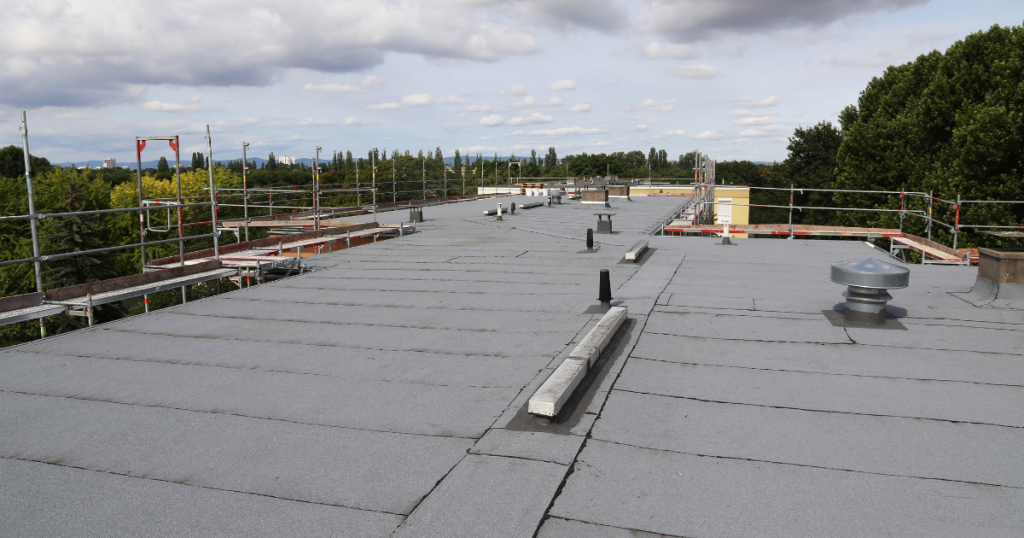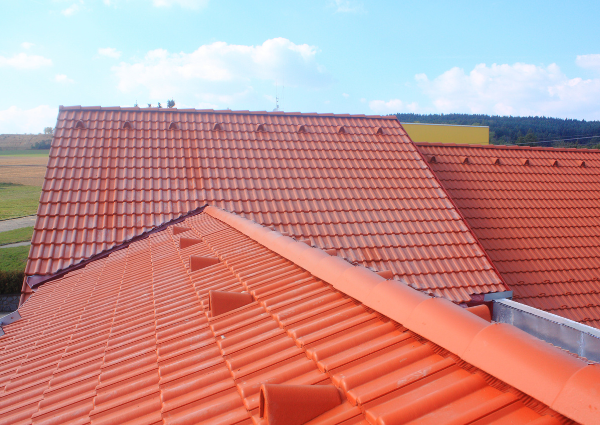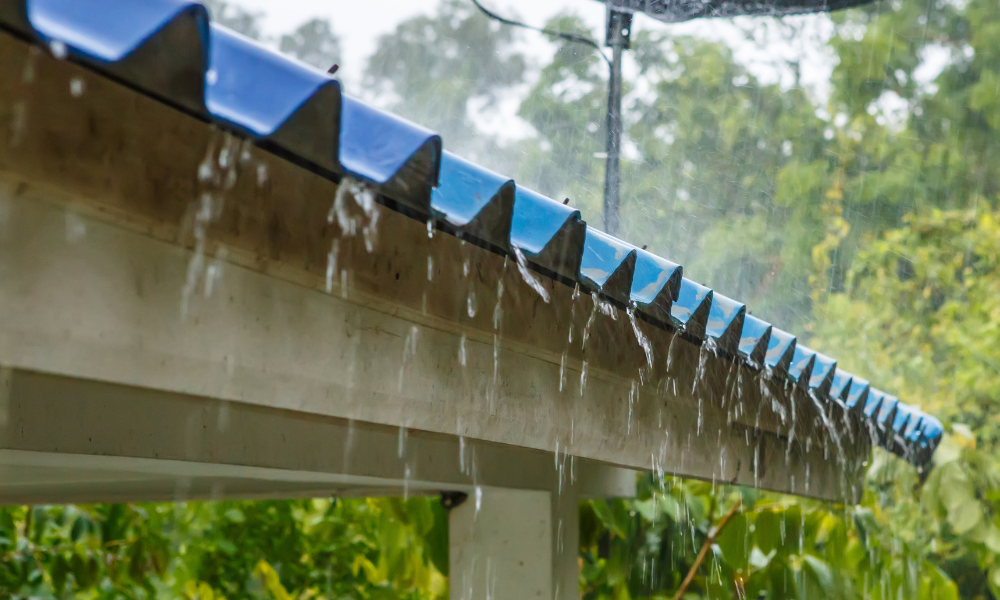Membrane roofing is a great investment for commercial buildings to keep their structural integrity over the years. However, it is not a secret that roofing membranes are quite costly to protect your roof from getting damaged by environmental elements like rain, hail, and snow.
What is membrane roofing, exactly? Is it actually worth installing? Let’s find out more in this blog.
What Is Membrane Roofing?
Membrane roofing uses a membrane to cover the top of a building. The roof membrane is made up of a thin sheet of plastic or rubber, which can be rolled out to cover a building’s surface. The membrane is usually installed on the roof and then secured by attaching it to structural members such as wood beams or steel columns.
Roof membranes are popular in areas where it rains often because they’re easy to install and maintain. They also provide good insulation against heat loss, which is important in areas with cold winters or hot summers.
What Is the Purpose of Membrane Roofing?
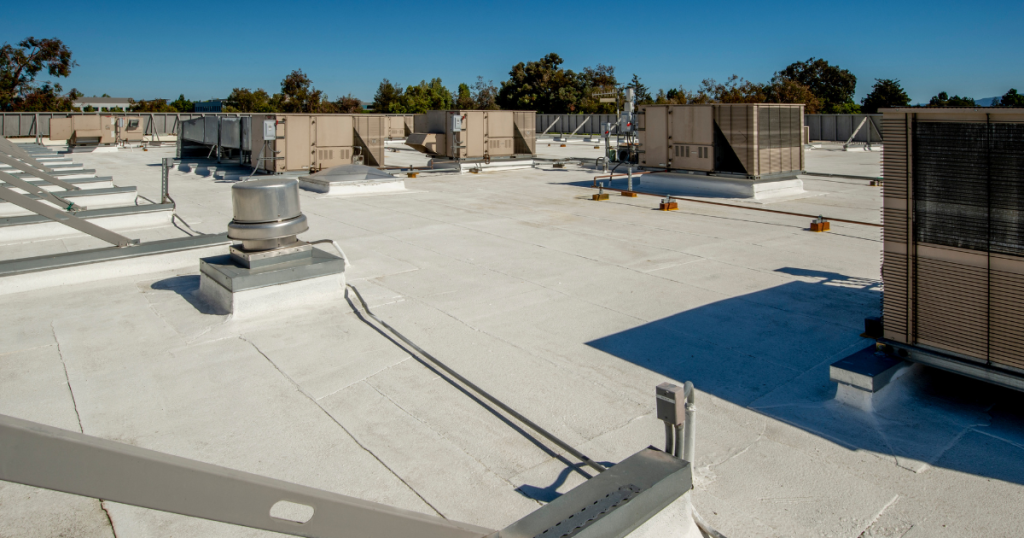
The main purpose of a roof membrane is to provide a reliable and low-maintenance solution for protecting buildings from water damage and maintaining a comfortable and safe indoor environment.
The waterproof barrier of a roof membrane is manufactured to protect a building or structure from possible water damage, especially if your area experiences heavy rains, snow, and thunderstorms. Roof membranes are designed to be flexible, durable, and long-lasting, making them an ideal choice for low-sloped or flat roofs.
3 Types of Roof Membranes for Commercial Buildings
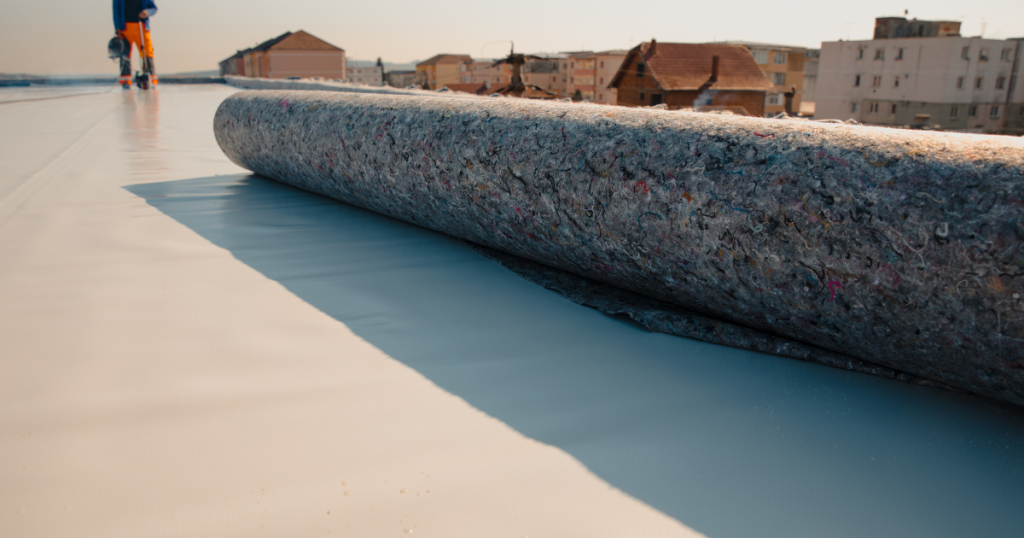
Check out the most common types of roofing membrane materials:
TPO Roof Membrane
Thermoplastic Roofing Membranes (Thermoplastic Olefin) is a type of single-ply roofing membrane that is commonly used in commercial and industrial roofing applications. It is a blend of polypropylene (a type of plastic) and ethylene-propylene rubber, which gives it a unique set of properties that make it well-suited for use as a roofing membrane.
Thermoplastic membranes are known for their durability, weather resistance, and energy efficiency. TPO roofing membranes come in rolls that are typically 10, 12, or 20 feet wide, and are available in different thicknesses. The rolls are installed on the roof using mechanical fasteners or adhesives, and the seams are heat-welded together to create a watertight seal.
EPDM Roof Membrane
EPDM (Ethylene Propylene Diene Monomer) is a type of synthetic rubber that is commonly used as a roofing membrane in commercial and industrial buildings. It is a durable and flexible material that is known for its resistance to weathering, UV radiation, and thermal shock.
EPDM roofing membranes are available in large sheets that are typically 10-20 feet wide, and can be as long as 100 feet. The sheets are typically installed using mechanical fasteners or adhesives, and the seams are sealed using specialized tape or adhesive.
PVC Roofing Membranes
PVC (Polyvinyl Chloride) roofing membrane is a type of single-ply roofing material that is commonly used in commercial and industrial roofing applications. It is a flexible, synthetic material that is designed to be highly resistant to weathering, UV radiation, and chemicals.
[Read More: How Long Does A Single Ply Roofing Membrane Last?]
What is the Average Cost of Commercial Roofing Membrane in Phoenix, AZ
The average cost of installing a single-ply roof membrane for a commercial building is about $7,000–$23,000 for the materials and labor of the roofing contractor.
How Long Does a Membrane Roof Last?
The lifespan of a membrane roof can vary depending on several factors, such as the quality of the materials used and the installation process, the location and climate of the building, and the level of maintenance it receives.
In general, most membrane roofs have a lifespan of 20 to 30 years, although some high-quality systems can last up to 50 years or more with proper maintenance.
Pros and Cons of Roof Membranes

Roof membranes became a popular choice for flat roofs or low-sloped roofs in commercial and industrial buildings. To help you better with your purchase decisions, here are some of the pros and cons to consider:
Pros:
- Highly durable and resistant to weathering, UV radiation, and other types of damage.
- Many membrane roofing systems are available in white or light-colored options that can reflect sunlight and reduce heat absorption, helping to lower energy costs and improve the energy efficiency of the building
- Helps prevent leaks and water damage to the commercial building
- Easy to install
- Requires little maintenance, making it a good choice for buildings where access to the roof may be limited
Cons:
- Can be more expensive than other types of roofing materials, especially for high-quality systems.
- Some types of membrane roofing rely on seams that can be vulnerable to damage or leaks if not properly installed or maintained
- Generally available in a limited range of colors and styles, which may not be suitable for all types of buildings
- Can be susceptible to punctures from falling objects, foot traffic, or other types of impacts
- Some types of membrane roofing, such as PVC, can have a negative environmental impact if not properly disposed of or recycled
Invest in Quality Roof Membranes Today!
The right roofing contractor with years of experience can help you install your preferred roofing membranes. Easy Roof Solution commits to giving you the best and highest quality of membranes to protect your building at all costs. Get a free quote today!
Ken Byler
Founder of Easy Roof Solutions, LLC. He started in the construction industry at the age of 14 and has been involved in it for over 25 years. His wide experience in commercial roofing speaks for itself.
Outside his roofing work, Ken enjoys being in the great outdoors, traveling to new places, and bonding with his wife and children.

